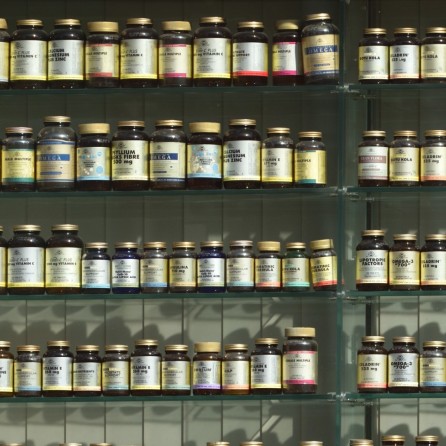
New research has found that existing guidelines on recommended vitamin D intake may be dangerously low.
It is safe to say that most people within the MS community are aware of a link between vitamin D and multiple sclerosis.
There is now overwhelming evidence of its role in the prevention of MS, and very convincing data for the prevention of relapses and disability progression once diagnosed.
Quite understandably, we OMSers can get a bit “blinkered” in our research and focus on the minutiae of MS alone. But it is worth broadening our horizons from time to time and stepping back to see the bigger picture.
A very exciting paper from the University of Athens School of Medicine is certainly worthy of a look up from the MS microscope.
In this review the authors discovered that a simple error of calculation has led to a worldwide UNDER-supplementation of vitamin D and concerning levels of vitamin D deficiency, with potentially deadly consequences for global health.
Approximately one billion individuals worldwide, nearly 15% of the world’s population, are vitamin D deficient (fewer than 50 nmol/L) or insufficient (50-75nmol/L).
In 2010, the Institute of Medicine, a Government Health Agency in the United States, released guidance stating that for 97.5% of the population to have sufficient vitamin D for health, their levels should be 50 nmol/L or more.
They calculated that for the average adult this meant a recommended daily intake of 600IU. In the UK the NHS advises 400IU (10mcg) supplementation to those at risk of deficiency.
A further report in 2011 by the Endocrine Society advised that at least 1,500-2,000 IU/day of supplemental vitamin D might be required in adults, and at least 1,000 IU/day in children and adolescents to achieve levels of more than 75nmol/L.
But the devil, they say, is in the detail. Scientists rigorously re-analyzing the original data sets have now found that these figures just don’t add up.
In fact, they proved that 8895 IU/d are needed for 97.5% of individuals to achieve values ≥50 nmol/L, and 9122 IU/day to reach 100 nmol/L.
The largest ever meta-analysis, of ALL the studies published between 1966 and 2013 on the effects of vitamin D and all-cause mortality (deaths due to any cause – including heart disease, cancer, autoimmune disease) is very clear on this. It showed that the recommended 75nmol/L level may actually be too low, and associated with higher all-cause mortality; an increased risk of death.
The latest re-calculation simply destroys the previously perceived wisdom. In order to reduce your risk of death to average or below, then the level needs to be over 100 nmol/L. T
his means that the average adult requires approximately 10,000IU of vitamin D daily to protect them from a potentially preventable death! The authors then make the bold step to call on “all responsible public health authorities” to set as their safe upper tolerable daily intake doses for patients at risk for vitamin D deficiency (<50 nmol/L):
If this were to be implemented worldwide, imagine how many cases of MS could be prevented, never mind all the heart disease, stroke, cancers and depression, to name but a few diseases! The authors are clear that at this level there is almost zero risk of toxicity.
To put this in a context outside of MS, cases of autoimmune (Type 1) diabetes have been increasing worldwide at a rate of 3% annually. Some of the theories behind this relate closely to those of MS, for example cow’s milk intake, and yes, you guessed it – vitamin D deficiency.
In Finland, the recommendation for daily vitamin D supplementation was gradually reduced from 4000-5000 IU in 1964 to 400 IU in 1992.
During the same period, cases of T1 diabetes increased by 350% in 1-4 year-olds, 100% in those aged 5-9, and by 50% in the 10-14 year-olds. Since 2006, the authorities have fortified all dietary dairy products with vitamin D (the irony of which is not lost on this audience), and cases of T1 diabetes have plateaued and now begun to decrease.
So OMSers have the right to feel just a little bit smug today, thanks to Prof. Jelinek’s pioneering research and backed up by this latest paper. People with MS following the Overcoming MS Program have of course been doing this for years! Hopefully now the wider scientific community will start to come around to our way of thinking about vitamin D and its many benefits outside of just bone health.
It may also reassure those taking these higher doses of vitamin D, if they are worried that they are in some way doing something a little risky. In fact, we are just taking what everyone else should be, and protecting ourselves not only from the effects of MS, but also many other Western diseases. Well done OMS!
Dr Jonathan White MBChB MRCOG